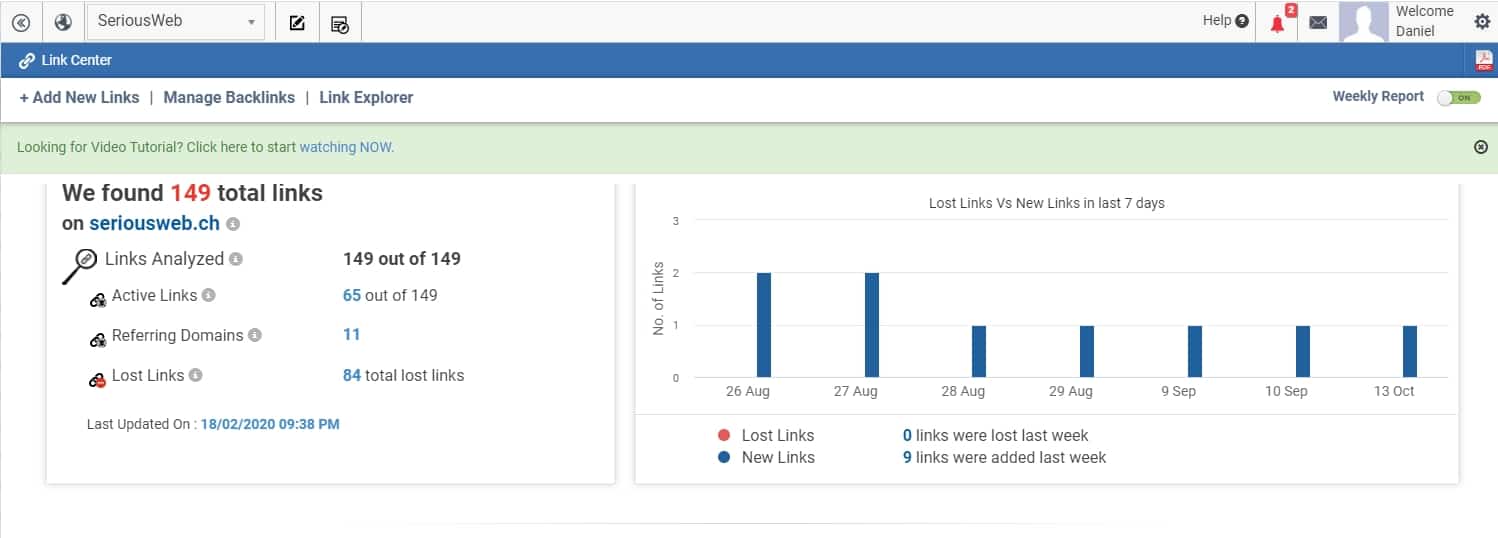Redesigning a website or migrating to a new CMS takes a lot of planning and hard work. It can also be disastrous if you don’t take the proper SEO precautions.
When done right, the process should be mostly painless. When done wrong, a redesign can be disastrous.
We all know the incredible importance of organic search.
If you lose a majority of your rankings and traffic, you’ll see fewer leads and less sales.
This post will help you avoid such a fate.
Here are some specific steps you can take before migration, during launch, and post-launch to mitigate risk and avoid SEO disaster when redesigning your website.
Before Migration
Goals & Project Plan
There are likely some pretty compelling reasons why you are embarking on a website redesign. Those could be tied to:
- Business use-cases.
- User experience improvements.
- Marketing initiatives.
- SEO improvements.
A key aspect of ensuring the project will be a success is setting appropriate goals. Now is the time to make sure you have a baseline or benchmark to compare to after launch and a plan taking you from start to finish in the process.
Most web projects follow a specific plan or agile methodology. This plan is typically managed by the project owner whether they are in an account service, project management, product, IT, or an aligned role.
Having SEO steps lined out, timing, a checklist, and the quality control plan in front of everyone can allow for ensuring the SEO is represented at each step and taken into consideration.
Content & Information Architecture
Context of the website subject matter overall, and sub-topic themes, are critical to SEO success.
This is built through the specific content on the site and how that content is organized.
Changes to the information architecture, sitemap, and overall content plan in the redesign is key and something SEO needs to be involved in and help drive.
You want to make sure that important pages are not omitted from the site going forward if they carry SEO value and that the overall message and theme of sections of the site are not diluted by the design.
Start with current sitemap and work with your team on requirements for the new sitemap as this will be your guide the rest of the steps in the redesign process for SEO.
You can use a crawling tool (e.g., Screaming Frog or DeepCrawl) to find all pages of your website.
On-page Optimization
Digging deeper to a page level, the relevance of content to the intent of the searcher is important to maintain.
When you know what context and overall architecture is changing (or remaining the same), you can work to protect or proactively optimize at the page level for the specific elements that help with relevance – URL, page title, meta description, body copy, alt text, etc.
How deep the changes are to architecture and sitemap overall will dictate how much you need to focus on relevancy of content at a depth level to ensure you don’t lose subject matter content on the site.
You want to optimize your staging site or code-base that will be launched and not wait until post-launch to make these updates.
Redirects
There’s a basic user experience case to be made for ensuring that you map out 301 redirects for all pages that are getting new URLs and those that are going away in the redesigned site. We never want to serve up a 404 error page to a user if we can avoid it.
The search engines are OK with 404s if we are hoping to have content removed from the index. However, we probably don’t want that to happen either unless we intend for it to.
Any link equity we have will be lost if the pages being linked to result in a 404 error.
It is important to ensure that all pages that have links pointing to them (at the very least) are properly redirected if we don’t have control over ensuring that the links are updated to the new destination page URL.
If you have a large website, this could very well be the most time intensive and important part of the redesign process.
SeriousWeb Backlink Analytics Tool
We use professional tools to analyze our client’s website and identify Backlinks which carry SEO impact:
Use the crawl that you did earlier for your sitemap planning to determine all URLs that need to be redirected.
You can also gain a lot of insight from Google Search Console and Bing Webmaster Tools as to which pages the search engines crawl on an ongoing basis to make sure you don’t miss any redirects.
When you have all redirects mapped out, ensure that they are implemented at the server level or in a site plug-in and are ready to go for launch.
Failure to plan for redirects is something that I’ve seen far too many times over the years.
I have been asked to come in and do rescue work after a redesign launches that either overlooked the process as a whole or didn’t consider the impact that redirects could have.
It is difficult to do this work after launch as the damage has often been done with search engines and users getting 404 errors.
Even when we can do some forensics to find the old site URLs and implement redirects, we have lost precious time meaning that we’ll have to take the short-term hit and hope to get back the relevancy and authority status that we had with the old website.
Launch (Go-Live)
At launch time, you’ll want to follow along with the go-live checklist and perform any possible quality control checks of the work you have done to date on the staging site.
Don’t give the go-ahead for launch if any of your on-page work or redirects are not in place or tested.
It is much easier to slightly delay launch than to undo damage later or have to roll back to the old website.
Post-Launch
Check Redirects
Your first step is to go back to your redirect file, old sitemap, and old site crawl to test and ensure that all old site URLs perform 301 redirects to new site URLs as you outlined.
This is where you can catch any stray 404s and implement additional redirects quickly.
You can start by spot-checking URLs and then go deeper as time permits to work through as many old site URLs possible.
Dev-to-Live Audit
Beyond the redirects, you want to make sure that all pages and specific on-page optimization carried over from the dev site to the live site.
If your website has a lot of dynamic content, this can prove important as sometimes databases and tables get missed in migration.
For example, if you optimized all title tags on the staging site but the database they are in didn’t go live at launch, you might find missing or default duplicate titles on every page or on product pages, etc.
Code & Performance Validation
Don’t assume that the live website will perform the same as the staging site did. Run the homepage and key pages through the mobile-friendly testing tool to ensure the site achieves passing grades.
Additionally, run the page speed tools to find any areas that need to be optimized on the new website. The difference in servers, hosting, and other loads on the production site can cause hiccups that you wouldn’t have found on the staging website.
Also, don’t forget about any schema markup you have on the site.
Using validation tools to ensure proper implementation here are helpful in case anything changed between the old, staging, and live sites and how the search engines render them.
Submit XML Sitemaps
When you are satisfied with your redirects working properly and the implementation of SEO on the live site, it is time to submit the XML sitemap. Ensure that the dynamic sitemap includes the desired full set of destination URLs. If you are using a static sitemap, generate a new one now, audit it, and submit it.
Note that you want to be sure that your XML sitemap file(s) are pristine. You want to have zero URLs that result in a 404 error and ensure all URLs are the destination URLs versus redirects or pages that canonical to another version.
Monitoring
It feels good to be done with the hard work involved in SEO for the relaunch and the migration overall. It is important to shift your mindset to a monitoring phase.
For the next 1-2 months, you need to monitor Google Search Console and Bing Webmaster Tools to watch for reported 404 errors, crawl errors, and any HTML on-page issues detected. Tackle these quickly.
Ongoing SEO
Remember that SEO is not a one-time thing.
Once the dust has settled and the monitoring phase is in motion, you can go back to your original plan and goals and measure the performance of the new site.
From here you can resume your normal ongoing optimization plan.





0 Comments